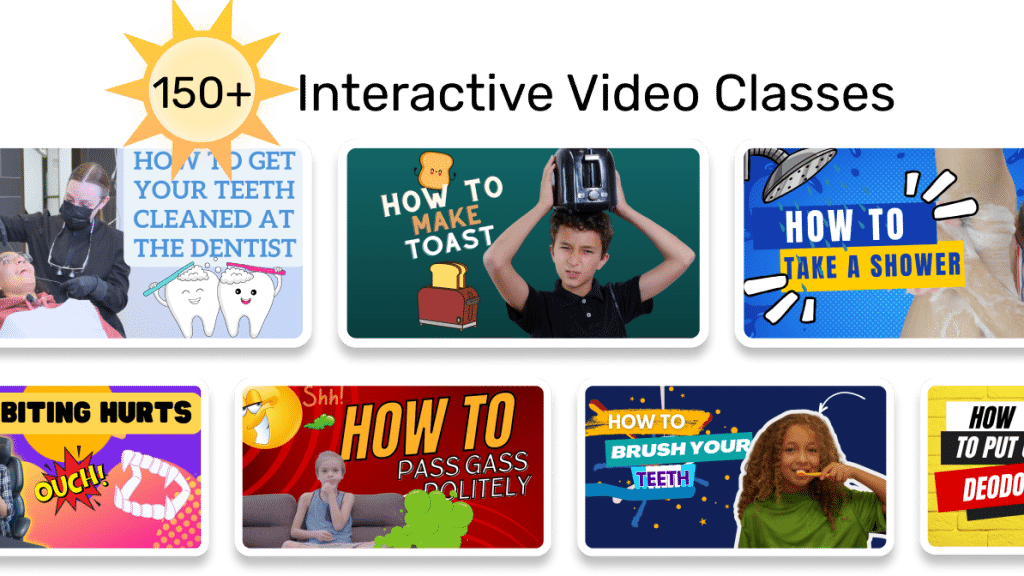Stimming during excitement is a normal way for children to express joy. Understanding this behavior helps parents support their child’s emotional regulation and ensures safe, healthy self-expression.
Key Takeaways
- Stimming Explained: A natural behavior that helps children self-soothe and express emotions, often triggered by neurotransmitters like dopamine and serotonin.
- Common Non-Autistic Stimming: Includes actions like jiggling a foot, twirling hair, or tapping fingers, which are typically harmless.
- Recognizing Harmful Stimming: It’s crucial to differentiate between harmless stimming and behaviors that could lead to injury or social difficulties.
Is stimming always a sign of autism?
No, stimming can be a normal behavior in children, often as a way to express excitement or manage emotions, and it is not always related to autism.
Table of Contents
Why Do People Stim?
Stimming is a type of self-stimulatory behavior that people do to self-soothe. It can include repetitive actions like:
- Jiggling a foot
- Biting fingernails
- Twirling hair
- Drumming fingers
- Doodling
- Tapping your feet
- Rocking back and forth
- Picking at scabs
Did you know that neurotransmitters like dopamine (the “happy hormone”) and serotonin play a significant role in excitement-related stims? That’s right! When these chemicals release into our brain they may cause us to express ourselves through various physical or verbal stims.

Read more: Fidget Toys for ADHD | Do They Help?
However, there’s an important distinction to make here between healthy emotional expression and unhealthy repetitive behaviors. When a child is simply enjoying themselves with harmless stims (like clapping their hands or singing), then there shouldn’t be any cause for concern. After all, who doesn’t love expressing happiness? But if their stims start to interfere with daily life or become potentially harmful to themselves or others, it might be time to step back and consider what could be driving those actions.
Common Stimming Behaviors
When children are excited, they may engage in stimming behaviors that bring them joy. These can include physical actions like rocking, hand flapping, or spinning, as well as verbal behaviors such as repetitive speech or humming favorite tunes. It’s important to understand that these behaviors, when exhibited in moderation and at appropriate times, are typically harmless and normal expressions of excitement.
While stimming is commonly linked with neurodivergence, ADHD, and autism, it’s a common misconception that only autistic people stim. Non-autistic people also stim, and examples of non-autistic stimming include:
- Biting fingernails
- Twirling hair
- Drumming fingers
- Doodling
- Tapping your feet
- Rocking back and forth
If your child is doing non autistic stimming when excited, and it’s not related to autism, it’s simply a way for them to fully embrace and enjoy the moment. Encourage their self-expression, celebrate their uniqueness, and ensure their safety and well-being. Embracing and supporting their exuberance allows them to be themselves and experience the joy of the moment.
When Stimming Becomes Harmful
| Child Stimming When Excited Not Autism |
|---|
| – Excessive or disruptive stimming can hinder social functioning – Some forms of stimming may pose physical harm – Parents should be vigilant about repetitive behaviors that could lead to injury – Inappropriate public stimming can lead to misunderstandings and judgment |
| – Recognize potentially harmful stims – Help children develop self-regulation techniques – Ensure kids can express themselves safely and appropriately |
Tips for Parents to Recognize Dangerous Stimming
Parents, it’s essential that you stay vigilant in recognizing potentially dangerous stimming behaviors. Here are some helpful tips:
- Encourage open communication with your child about their feelings and emotions. Ask them how they’re feeling and let them know it’s safe to express themselves.
- Keep an eye out for signs indicating increased anxiety or stress levels in your little one. These could be triggers for harmful stims.
- Consider keeping a journal or log of observed repetitive behaviors over time. Patterns may emerge that can help you pinpoint areas of concern.
With close attention and loving guidance, parents can play a vital role in promoting healthy emotional expression among children who experience excitement-induced non autistic stimming!

Read more: Activities of Daily Living
Tips for Kids to Control Stimming Behavior Themselves
As parents, we want our kids to feel empowered in managing their own emotions and behaviors! Here are some tips on helping children learn self-regulation techniques when it comes to excitement stimming:
- Introduce alternative stress-relief strategies like deep breathing exercises or progressive muscle relaxation. These can provide effective outlets without the risks associated with harmful stims.
- Help your child identify safe spaces where they can engage in harmless stims without fear of judgment from others. This might be their bedroom, the backyard, or even a designated “calm-down” corner at home.
- Encourage self-awareness by discussing the importance of recognizing and managing their own emotions. Remind them that understanding what drives certain actions is key to making healthier choices moving forward!
Here are some additional tips for managing stimming:
- Eliminate or reduce the trigger
- Lower stress
- Provide a calming environment
- Stick to a routine for daily tasks
- Encourage acceptable behaviors and self-control
- Avoid punishing the behavior
- Teach an alternate behavior that helps to meet the same needs
Nonverbal children may use stimming as a result of frustration with pain or stress that they cannot verbalize. If a child repeatedly holds or gestures toward a certain part of their body during stimming, get a medical exam quickly to rule out any painful conditions.
Read More: The Top 7 Self-Help Tools
With patience and support from both parents and children alike, families can navigate the world of excitement stimming together – remember, sometimes a child stimming when excited is not autism but simply another way of expressing joy!
Goally | 100+ Streaming Video Classes
Does your child need some extra guidance on building essential life skills? Goally’s skill building tablet for kids includes a TV app that has the most robust video library of skills training videos for kids. Ranging from content like “How to Brush Your Teeth” to “How to Make Friends at School,” we have dozens of interactive video lessons for kids with thinking and learning differences.

HERE’s a video explaining how to works.
As we wrap up this enlightening journey through excitement stimming, let’s recap what we’ve learned together. We now understand that stimming is a way for children to process sensory information and regulate emotions. Remember that a child is stimming when they’re excited, and it’s not autism that can be a normal aspect of their emotional expression! We’ve also discussed common harmless stims while looking into situations where these behaviors might become harmful or disruptive. It’s important for parents to remain vigilant in recognizing potentially dangerous stims, encouraging open communication with their kids about emotions, and supporting self-regulation techniques. Together, we can help our children express their joy safely while understanding the nuances of excitement-induced stimming.
Helpful Resources
FAQ’s About Child Stimming When Excited Not Autism
What is stimming when a child is excited?
Stimming when a child is excited is a repetitive behavior used to express joy or manage emotions.
Is stimming always a sign of autism?
No, stimming can be a normal behavior in children and isn't always related to autism.
Why does my child stim when excited?
Your child may stim when excited to self-soothe and express their emotions physically.
What are examples of non-autistic stimming?
Examples include foot tapping, hand clapping, hair twirling, and finger drumming.
Should I be concerned about my child’s stimming?
Stimming is usually harmless, but it’s important to monitor it to ensure it doesn’t interfere with daily life or cause harm.
This post was originally published on 03/31/2023. It was updated on 08/21/2024.
Emily is a seasoned blog writer for Goally, leveraging her extensive background in child psychology and special education to provide valuable insights and resources for parents. Her commitment to understanding and addressing the unique needs of these children, combined with her expertise in educational strategies, makes her a credible and empathetic voice for families.





